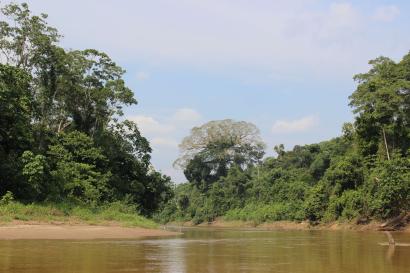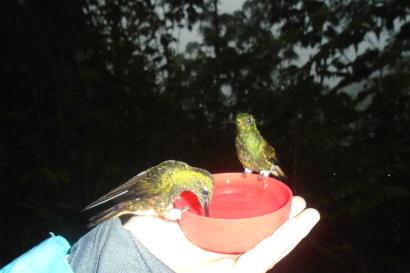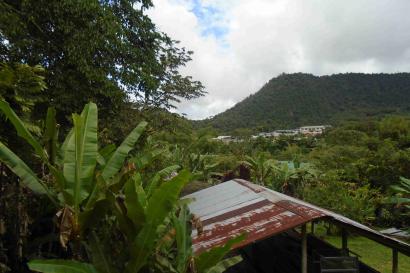Before leaving to study abroad, I hoped that classes in Ecuador would offer a different perspective and challenge my own ideas about people and the environment. Yet, over the past three weeks I have been happily surprised to find that classes abroad go far beyond introducing new perspectives, and every class has a plethora of opportunities to physically apply academic discussions to the surrounding environment through field trips. And, while it initially felt strange to only take one class at a time, each class is filled to the brim with trips and time to simply interact with the environment, making every day feel like a new adventure.
After two days of class and a whirlwind of preparation, our Wildlife Conservation Biology class hopped on a bus and made our way to Santa Lucia in the Cloud Forest. Travel to the cloud forest included a two-hour bus ride, ten-minute journey in the back of a truck, and a two-hour hike up to Santa Lucia lodge. As we slowly climbed up to the lodge, we watched the clouds creep into the forest, listened to the birds chirping, and tried to fully appreciate the beauty that surrounded us. The flora in the cloud forest is beyond what my imagination conjures in even its sweetest dream. Epiphytes and bromeliads crowd the trees, leaves appear in every shape and size, and roots hang down from the tallest trees like snakes.
The week at Santa Lucia included discussions about sustainable tourism, a hike to a sugar plantation, time viewing images from camera traps in the area, and watching hummingbirds flutter around flowers and small feeders. I could have spent hours watching the sun crawl above the tree-line in the morning while hummingbirds swirled around the row of feeders located just outside the lodge. But, I also loved wandering around the forest, finding new plants and animals around every corner. One afternoon we even made our way to a swing hanging from a tall tree and had the most magical and liberating experience of gliding through the forest.

The day we left Santa Lucia, we woke up at 3:45 to journey to the lek (a location where male birds congregate in order to attract females) in hopes of watching the Andean Cock-of-the-Rocks. After making our way around the river and to the lek, we sat silently for about an hour watching as the bright red birds led a chorus of coos. The male birds hopped around and let out a combination of screeches and knocking in hopes of attracting the one present female bird, who seemed completely uninterested in their noisy efforts. We observed the flashes of red jumping through the trees and anxious interactions until the sun began to shimmer through the trees when we made our way back to the lodge. Before leaving the cloud forest, the staff at Santa Lucia bid us farewell with a brief concert and we had one last chance to appreciate the beauty as we hiked back to the trailhead where our bus was waiting.
Although I was initially sad to say goodbye to Santa Lucia, I was excited for the field trips to come in the next few weeks. After a weekend of rest and one more day of class, it was time to head to the páramo in Antisana which is Ecuador’s fourth largest volcano reaching up to 5,704 meters and providing fresh water for approximately 80% of Quito’s population. We drove for approximately an hour and a half in a small bus before arriving, and when we stepped out of the bus we were hit with cold blasts of wind and some light rain. It was strange to jump from a warm and sunny day in Quito to a cold and wet day in the páramo, but the view and altitude were still breathtaking. We watched condors glide through the sky, rabbits circle the area, and observed plants that have adapted to grow in rosettes and bunches to survive in the cold. We eventually embraced the chilly weather and hiked to a large fresh-water lake, and then to an overlook. Coming down from the overlook was a little bit like ice skating as we carefully slid through the mud. Our occasional squeals from sliding came to accompany the peaceful sound of the wind as we latched on to the surrounding grasses. Everyone made it back to the bus, and we enjoyed a delicious lunch and watched condors soar through the sky before heading back to Quito.
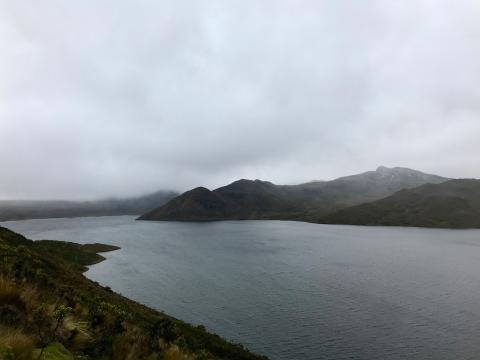
Our final class fieldtrip was to Tiputini Biodiversity Station in the Amazon rainforest. In order to get to the biodiversity station, we took a plane to Coca, a boat along the Rio Napo to an oil company checkpoint, a chiva (open-aired bus) along the oil companies road, and another boat on the Rio Tiputini. The journey was long, and my mind filled with the thoughts about the environmental and social costs of visiting the biodiversity station. Our trip to the Amazon not only contributed directly to greenhouse gas emissions, but also to oil drilling in the Amazon and development of roads in the region that allow for further colonization and environmental degradation. Nevertheless, every second of the trip was amazing and we watched the forest become more dense and abundant as we progressed through the river.
Over the course of a week at Tiputini Biodiversity Station, we went on numerous short hikes with guides and researchers who worked at the station. We saw jaguar prints, howler and pigmy monkeys, toucans, macaws, caimans, countless insects, frogs, and spiders. The guides knew the rainforest inside and out, and shared information about indigenous medicines, various species, and the history of oil extraction in Ecuador. One of my favorite moments in the Amazon was jumping into the Tiputini river and effortlessly floating down the river listening to the surrounding sounds and appreciating the unbelievable beauty.
The past few weeks have been filled with so many unbelievable experiences, and the vast environments and biodiversity in Ecuador still feel more like a dream than reality. I am so grateful for the privilege of experiencing the places that inspire my passion for the environment, and am looking forward to more trips to come!
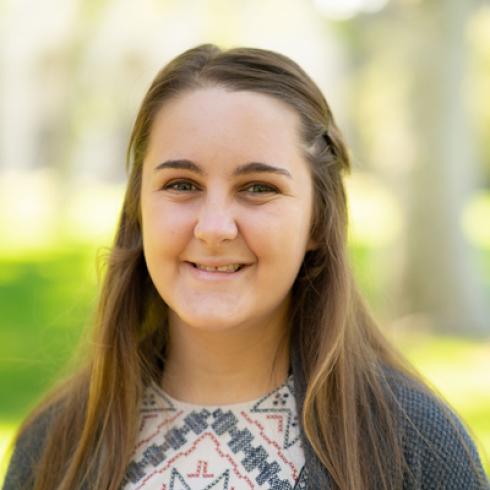
Jennifer Bass
<p>I am a music and environmental studies: policy, culture, society student at Pacific University. In my spare time I enjoy playing violin, hiking, tap dancing, reading, and exploring this wonderful planet as much as possible! I am also passionate about sustainability, social justice, traveling, and old movies or I Love Lucy reruns.</p>





